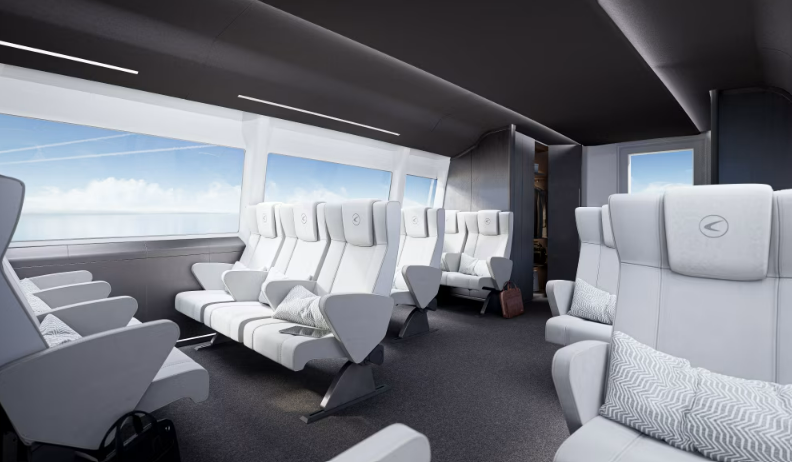The world’s first all-electric hydrofoil passenger boat has cruised through its “test flight” in Sweden and is now set for serial production at a factory near Stockholm.
Designed by Swedish tech company Candela Technology AB, the Candela P-12 can travel at 30 knots, a record for electric passenger vessels, with a range of up to 92 kilometers (50 nautical miles).
Much of the vessel’s performance is thanks to its hydrofoils, wing-like structures mounted on struts below the hull. These lift the vessel out of the water and significantly reduce drag, helping the vessel to travel faster. Gliding with the help of the hydrofoil also makes the vessel more energy efficient, using 80 percent less energy than conventional ships at high speed.
To ensure a smooth journey, the foils are also fitted with sensors and a computer system that gauges wave height and wind speed to stabilize the vessel. The company claims this helps passengers experience 90 percent less g-force than they would on a traditional boat, even during rough weather.
Measuring just under 12 meters (39 feet) in length, the Shuttle version of the boat can fit up to 30 passengers, as well as space for bicycles and pushchairs. The Shuttle model will set you back €1.7 million (over $1.8 million), which is apparently a similar price to a comparable boat with a combustion engine, but significantly lower than other renewable options.
There is also a fancier Business version, which features a premium interior with seating for 12 to 20 passengers, plus suitcases.
Candela has already rolled out a number of small leisure boat models for private customers, but the P-12 aims to be the company’s first foray into commercial vessels.
“The P-12 is a platform that will cater to a vast range of clients. Whether it’s public transport fleets, VIP services, or private customers, it will revolutionize how we travel on water,” Gustav Hasselskog, CEO of Candela Technology, said in a statement.
An artist’s illustration of the fancy “Business” model’s interior.
Image credit: Candela Technology AB
Sweden’s capital, Stockholm, is a waterfront city scattered across 14 islands, so water-based transport has the potential to play a big role in the city’s infrastructure. If the pilot scheme goes to plan, Candela aims to have their P-12 Shuttle join Stockholm’s public transport network in 2024.
“Today, in many cities, congested roads are common while waterways — humanity’s oldest transport infrastructure — remain underutilized for rapid commuting. The P-12 will let you use these waterways as green highways, enabling fast intra-city connections. Often, the quickest route is by water,” added Hasselskog.
Maritime transport currently accounts for 3 percent of global carbon emissions, and that is a figure set to rise to 13 percent in the coming decades if no action is taken. While the move towards electric ships has been slow and hit many hurdles, the trend is slowly growing trajectory. Two years ago, an autonomously electric-powered cargo ship set out on its maiden voyage in Norway.
Source Link: World’s First Electric "Flying" Hydrofoil Passenger Ship Is Unveiled
